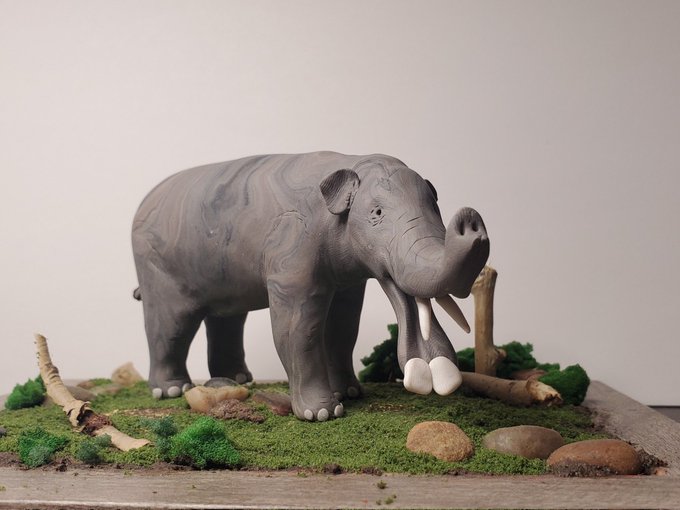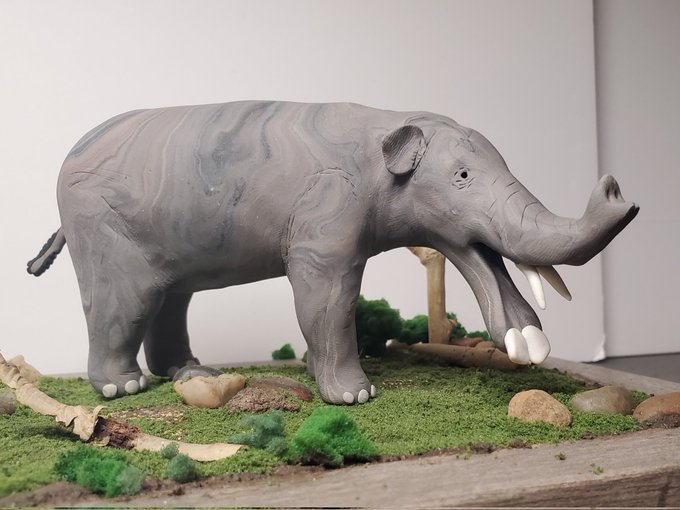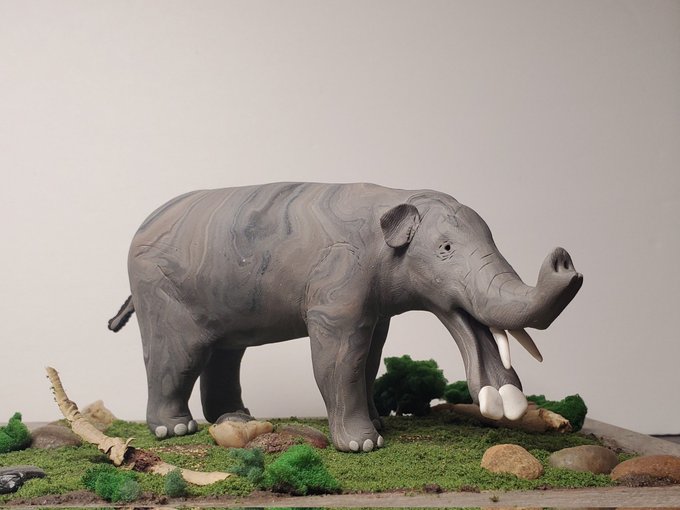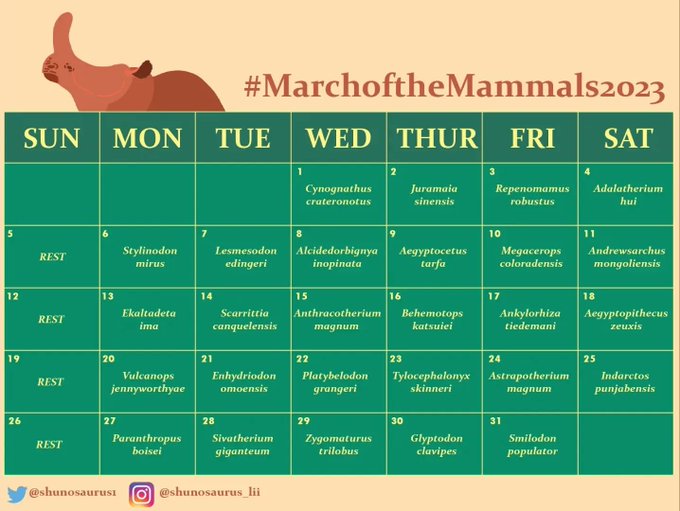MammalsのTwitterイラスト検索結果。 1,162 件中 2ページ目
#marchofthemammals2023 Day 22: Platybelodon grangeri. Platybelodon hopes you have a wonderful day today.
Platybelodon grangeri for day 19 of #marchofthemammals2023! She's very proud of her stick
Day 21: Enhydriodon omoensis
This massive Otter from Miocene Ethiopia was the largest known mustelid at over 400 lbs!
#marchofthemammals2023 #paleoart
@WhoShowTheLight @clumsystiggy Good point, here are 4 mammals with individual variation and differing color morphs, in all of these cases dispite differences they're all still classed under 1 species because pretending otherwise Is dumb as hell
Enhydriodon omoensis looking menacing on day 18 of #marchofthemammals2023
Just like you and me, birds need water to survive. Most birds drink some water every day, but they don’t drink the way we mammals do.
#parrotessentials #parrots #parrottrivia #parrotfacts #parrottips #parrotshop #parrottoys #parrotfood #parrottreats #parrotcages #parrotcaretip
Vulcanops jennyworthyae flying in for day 17 of #marchofthemammals2023!
Smilodon
Smilodon is an extinct genus of big cats. It is one of the most famous prehistoric mammals, and the best known saber-toothed cat. Although commonly known as the saber-toothed tiger, it was not closely related to the tiger.
Ankylorhiza tiedemani showing off some battle scars for day 15 of #marchofthemammals2023
@j_stocky Desmans I legitimately interesting mammals. They need to be talked about more often
A curious Behemotops katsuiei on day 14 of #marchofthemammals2023
#marchofthemammals2023 day 13, Anthracotherium magnum taking a quick nap
#marchofthemammals2023 Day 14: Scarrittia the rhino-like South American native ungulate going on a stroll
#marchofthemammals2023 Day 13: Ekaltadelta ima
This funny lil marsupial may have once lived in the Oligocene-Miocene in Australia, but they actually have a surviving relative called the Musky Rat Kangaroo🦘
Andrewsarchus mongoliensis trotting into day 10 of #marchofthemammals2023!
Day 11: Andrewsarchus mongoliensis
This massive carnivore from the Eocene was actually an even-toed ungulate, more closely related to modern hippos and the fearsome, extinct entelodonts than any group of carnivoran mammals!
#marchofthemammals2023 #paleoart
Day 10: Megacerops coloradensis
This huge Brontothere lived in North America during the Eocene epoch. Despite looking like a rhinoceros they were more closely related to modern horses!
#marchofthemammals2023 #paleoart #digitalart
#marchofthemammals2023 day 9 Megacerops colorodensis here with a friendly flehmen
#marchofthemammals2023 Day 9. Aegyptocetus
I should draw this guy more often, W creature design

































